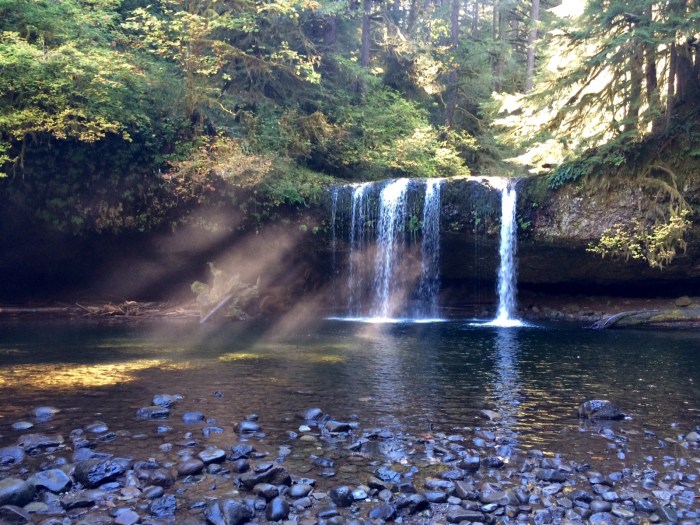Hiking trails around me sets the stage for an exciting exploration of nature’s beauty. Discover a wealth of options, from easy strolls to challenging climbs, all within a 10-mile radius. This guide provides detailed information on trail difficulty, distance, elevation gain, accessibility, and nearby amenities, empowering you to plan the perfect outdoor adventure. Whether you’re seeking a scenic overlook, a wildlife encounter, or a peaceful escape, this resource is your key to unlocking the hidden gems in your local area.
From wooded paths to mountain ascents and coastal trails, this comprehensive guide explores a range of hiking experiences. We’ll delve into trailhead facilities, such as parking, restrooms, and water fountains, and discuss nearby amenities, like restaurants and visitor centers. Furthermore, we’ll analyze the potential for wildlife encounters and safety precautions, ensuring a mindful and enjoyable experience for every hiker.
The diverse trail options cater to various preferences and skill levels.
Planning Your Hike

Source: trailsnearme.org
Strategic planning is crucial for a safe and enjoyable hiking experience. Proper preparation minimizes risks and maximizes the rewards of outdoor adventures. A well-defined itinerary, encompassing necessary safety precautions and adherence to trail regulations, ensures a positive outcome. This section details the key components of successful hiking planning.
Sample Day Hike Itinerary
A well-structured itinerary provides a roadmap for your day hike. Consider the chosen trail’s characteristics and your fitness level when crafting your schedule. For instance, a moderately challenging trail might require a 6-hour hike, factoring in breaks, allowing for a leisurely exploration. This example itinerary for a 6-hour hike on the “Summit Trail” demonstrates this approach:
- 7:00 AM: Start your hike with a hearty breakfast and hydration.
- 7:30 AM – 11:30 AM: Ascend the trail, pausing for breaks every 1.5 hours to avoid fatigue and enjoy the scenery.
- 11:30 AM – 12:30 PM: Reach the summit; take time for photos and admire the views.
- 12:30 PM – 2:00 PM: Descend the trail, allowing for a picnic lunch and rest stops.
- 2:00 PM: Finish your hike and head back to your vehicle.
Safety Precautions
Prioritizing safety is paramount during any outdoor activity. Comprehensive safety measures should be considered. Essential items like a fully charged phone, a first-aid kit, and plenty of water should be carried. Appropriate footwear and clothing are also crucial.
- Know your limits: Select trails that align with your physical capabilities and experience level.
- Inform someone of your plans: Share your itinerary with a friend or family member.
- Check the weather forecast: Be prepared for changes in weather conditions.
- Carry essential gear: Include a map, compass, and a whistle.
- Stay on marked trails: Avoid venturing off-trail, as this can lead to getting lost or injured.
Exploring hiking trails near me is a rewarding pastime, but discovering local parks with walking trails can significantly broaden your options. For a comprehensive guide to parks near me with walking trails, check out this resource: parks near me with walking trails. Ultimately, whether you prefer challenging climbs or leisurely strolls, the diverse landscape of hiking trails around me offers something for everyone.
Trail Regulations and Guidelines
Understanding and respecting trail regulations ensures a positive experience for all users. Following these guidelines contributes to the preservation of the natural environment.
- Leave no trace: Pack out everything you pack in, including trash.
- Stay on marked trails: Respect wildlife and maintain a safe distance.
- Follow posted regulations: Adhere to any specific guidelines or restrictions for the trail.
- Be considerate of other hikers: Maintain a respectful distance and yield the trail to others when necessary.
Trail Comparison Table
This table provides a comparative analysis of different trails, highlighting their difficulty, distance, and elevation gain.
| Trail Name | Difficulty | Distance (miles) | Elevation Gain (feet) |
|---|---|---|---|
| Summit Trail | Moderate | 6 | 1,500 |
| Canyon Trail | Easy | 3 | 500 |
| Ridge Trail | Challenging | 8 | 2,000 |
Checking Trail Conditions
Before embarking on a hike, it’s crucial to assess the trail’s current conditions. This proactive measure helps avoid unexpected challenges and ensures a safe and enjoyable experience. Information from previous hikers or local authorities provides valuable insights.
- Check recent trail reports: Look for updates on trail conditions, weather forecasts, and potential hazards.
- Consult with local authorities: Contact local park rangers or hiking organizations for up-to-date information.
- Seek advice from experienced hikers: Engage with local hikers for insights into recent trail experiences.
Visualizing the Trails: Hiking Trails Around Me

Source: goodemma.com
A crucial aspect of hiking planning is the ability to visualize the terrain and anticipate the experience. Understanding the landscape’s features, the potential wildlife encounters, and the overall aesthetic appeal of the trail significantly enhances the enjoyment and safety of the hike. A well-imagined route prepares the hiker mentally and physically for the challenges and rewards ahead.Visualizing the trail involves more than just a mental image.
It entails gathering detailed information about the specific environment, potential obstacles, and expected sights. This process allows hikers to tailor their preparation and equipment to the unique characteristics of the chosen trail.
Scenic Description of the Trail
The trail winds through a vibrant tapestry of colors and textures. Towering pines, their needles a deep emerald green, create a dense canopy, filtering the sunlight into dappled patterns on the forest floor. Patches of wildflowers, in hues of vibrant orange, purple, and yellow, carpet the slopes, adding a burst of color to the emerald green. The air is crisp and clean, carrying the sweet scent of pine and damp earth.
A babbling brook, its water a clear, icy blue, cuts a path through the woods, its melody a soothing counterpoint to the rustling leaves.
Wildlife Encounters, Hiking trails around me
Anticipating wildlife encounters is an integral part of trail visualization. The trail is home to a variety of small mammals, including squirrels, chipmunks, and rabbits. Birdlife is abundant, with various species flitting through the trees, and potentially opportunities to observe larger animals such as deer or elk depending on the specific trail and season. Knowing the typical animal behavior and habitats along the trail will help hikers plan their encounters safely and responsibly.
Exploring hiking trails around me often leads to discovering hidden gems. To pinpoint ideal hiking locations near me, resources like hiking locations near me can be invaluable. Ultimately, these discoveries enrich the overall hiking trail experience around me.
Observe the natural surroundings and plan accordingly.
Visual Representation of a Typical Trail Section
This trail section demonstrates a typical experience.
- Start at the trailhead, a parking area nestled amidst towering trees.
- Descend gently into a dense forest, the air growing cooler and more humid.
- Cross a small stream, its waters crystal clear.
- Reach a scenic overlook, offering panoramic views of the valley and surrounding mountains.
- Continue through a mixed forest of deciduous and coniferous trees, the undergrowth a rich tapestry of ferns and wildflowers.
- Follow a winding path, leading to a clearing with a large rock formation.
- Descent back to the parking area, ending the trail with a gradual incline.
Trail Landscape Information
Understanding the surrounding landscape helps hikers anticipate conditions and plan their route effectively.
| Location | Features | Description |
|---|---|---|
| Trailhead | Parking Area | Well-maintained parking lot with ample space for vehicles. |
| Mid-Trail | Stream Crossing | A shallow stream crossing requiring a short detour or stepping stones. |
| Overlook | Scenic Viewpoint | A clearing with a breathtaking view of the valley and surrounding mountains. |
| Forest | Variety of Trees | A mix of deciduous and coniferous trees, providing shade and a rich forest environment. |
Using Online Resources
Numerous online resources offer detailed trail information, including virtual tours and high-resolution imagery. These resources provide a wealth of information on trail conditions, wildlife sightings, and surrounding scenery. Utilize websites and applications dedicated to hiking and outdoor recreation to gain a better understanding of the trail’s appearance. These digital resources offer a virtual tour of the trail, allowing hikers to preview the landscape, anticipate potential challenges, and prepare accordingly.
Exploring hiking trails around me offers diverse landscapes. Finding challenging climbs is key, and discovering hiking mountains near me, like those detailed in this guide hiking mountains near me , provides a new perspective on local trails. Ultimately, the best hiking trails around me are those that offer a satisfying balance of challenge and beauty.
Many offer interactive maps, allowing users to zoom in on specific areas and gain a comprehensive understanding of the trail’s features.
User Reviews and Experiences
Understanding user experiences is crucial for enhancing trail accessibility and enjoyment. Thorough analysis of reviews provides valuable insights into trail conditions, challenges, and ideal visitation times. This data-driven approach informs trail maintenance and planning, ultimately leading to a more enriching hiking experience for all.User reviews offer a dynamic perspective on trails, transcending the limitations of static trail maps.
They paint a vivid picture of the on-the-ground reality, revealing nuanced details that formal assessments often miss. From the exhilaration of a challenging climb to the disappointment of encountering unexpected obstacles, user feedback provides a comprehensive view of the trail experience.
Exploring hiking trails around me offers a fantastic way to connect with nature. Understanding the nuances of hiking, as detailed in this definition Hiking Definition , is crucial for planning safe and enjoyable excursions. The varied terrain and accessibility options available on these local trails ensure there’s a path for every skill level.
Trail Difficulty and User Feedback
User feedback allows for a nuanced understanding of the difficulty of each trail. This is essential for tailoring the hiking experience to various skill levels and preferences. Different users experience the same trail in varying ways.
| Trail Difficulty | Common Experiences | Ideal Time of Year | Pros | Cons |
|---|---|---|---|---|
| Easy | Accessible for beginners, scenic views, generally well-maintained. | Spring or Fall (avoiding extreme heat and cold). | Relaxing, rewarding for families, provides a good introduction to hiking. | Can be repetitive, lacks challenging elevation changes. |
| Moderate | Combines moderate elevation gain, some rocky sections, suitable for intermediate hikers. | Spring or Fall (avoiding extreme weather). | Offers a balance between challenge and reward, rewarding views. | Requires some fitness, may be crowded during peak season. |
| Difficult | Steep ascents, technical terrain, potentially challenging weather conditions. | Shoulder seasons (spring or fall) provide better weather and fewer crowds. | Rewarding sense of accomplishment, often offers unique and secluded views. | Requires significant fitness, can be dangerous in poor weather conditions. |
Common Challenges and Concerns
User feedback highlights recurring challenges and concerns encountered during hikes. This understanding is crucial for addressing potential hazards and enhancing the safety and enjoyment of trails.
- Weather conditions are a major concern for all trail users. Unexpected changes in weather, including storms, heat waves, and extreme cold, can affect trail safety and comfort. Hikers often report difficulties navigating icy or muddy sections, highlighting the need for proper gear and preparation.
- Trail maintenance is another frequent area of concern. Uneven surfaces, overgrown vegetation, and damaged signage can impact safety and enjoyment. Users often suggest the need for more frequent trail maintenance and clearer signage.
- Crowds can pose a problem for hikers, particularly during peak seasons. Overcrowding can lead to congestion, safety concerns, and a diminished sense of peace and tranquility. Hikers often suggest alternative times to visit or solutions to improve trail capacity.
Best Time to Visit Specific Trails
User feedback provides insights into the ideal time of year for visiting different trails. This data-driven approach to trail planning optimizes the user experience.
“Spring and fall offer the best weather conditions for hiking, avoiding extreme heat and cold.”
Different trails might have different ideal times, often dictated by weather patterns and seasonal conditions. Understanding the unique characteristics of each trail, based on user feedback, allows for a more informed decision-making process.
Final Conclusion

Source: huffingtonpost.com
In conclusion, exploring hiking trails around you opens up a world of natural beauty and outdoor recreation. This guide offers a practical roadmap, providing detailed information on trails, their features, and necessary planning considerations. From accessibility to amenities, safety precautions to user reviews, this comprehensive resource equips you with the knowledge to embark on memorable hiking adventures. Remember to always prioritize safety and respect the environment while enjoying the captivating landscapes around you.
FAQ Section
What are the best times of year to hike these trails?
The ideal time to hike depends on the specific trail and your preferences. Spring and fall often offer pleasant temperatures and fewer crowds. Summer can be hot, requiring extra hydration and sun protection. Winter can present challenging conditions, such as icy trails and potential snow accumulation, so checking trail conditions before heading out is crucial.
How can I prepare for a challenging hike?
Proper preparation is key for a successful hike. Pack appropriate clothing and footwear for the weather conditions. Bring plenty of water and snacks. Consider bringing a first-aid kit, a map and compass, or GPS device. Check the trail conditions and weather forecast before heading out.
Are there any specific safety precautions I should take?
Always inform someone of your hiking plans, including the trail you intend to hike and estimated return time. Carry a fully charged cell phone, and be aware of potential hazards such as wildlife, steep inclines, or uneven terrain. Hiking with a buddy is always recommended.
What are the regulations and guidelines for using the trails?
Respect the environment and follow posted regulations. Stay on marked trails, pack out all trash, and be mindful of wildlife. Obey any specific rules or guidelines posted at the trailhead.






Leave a Reply